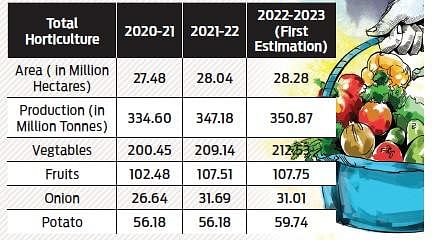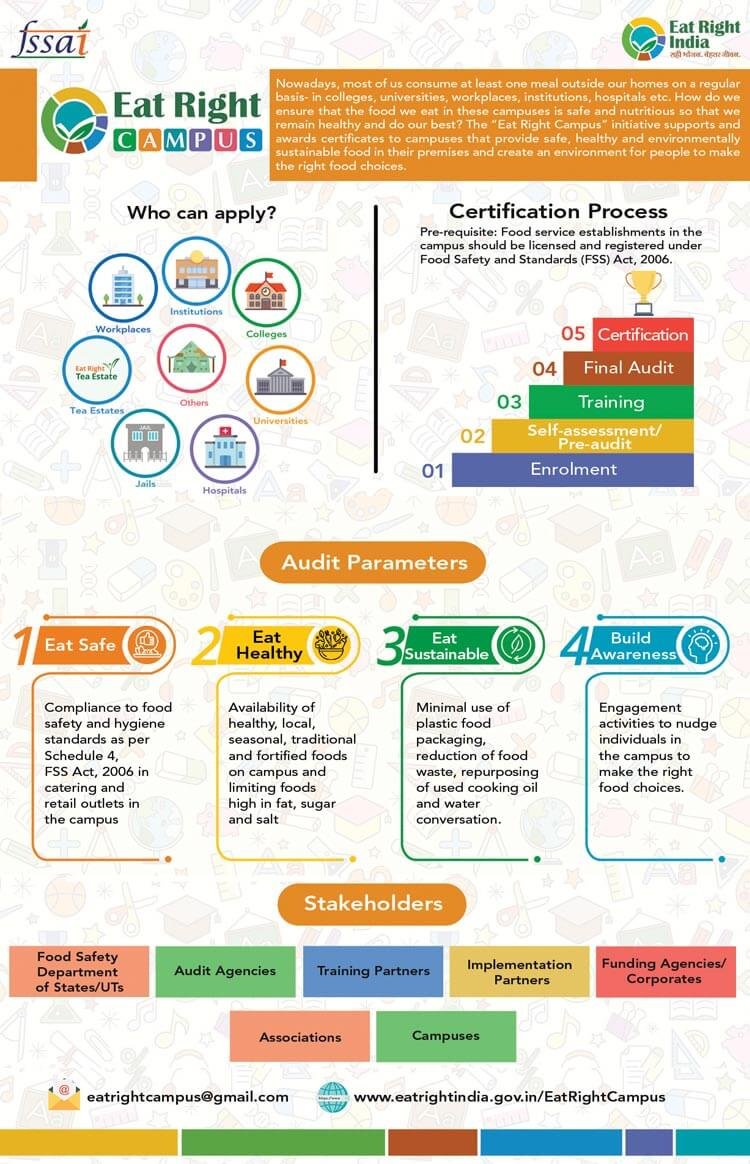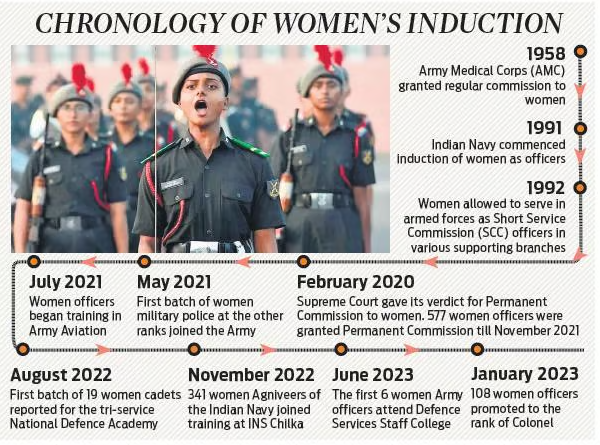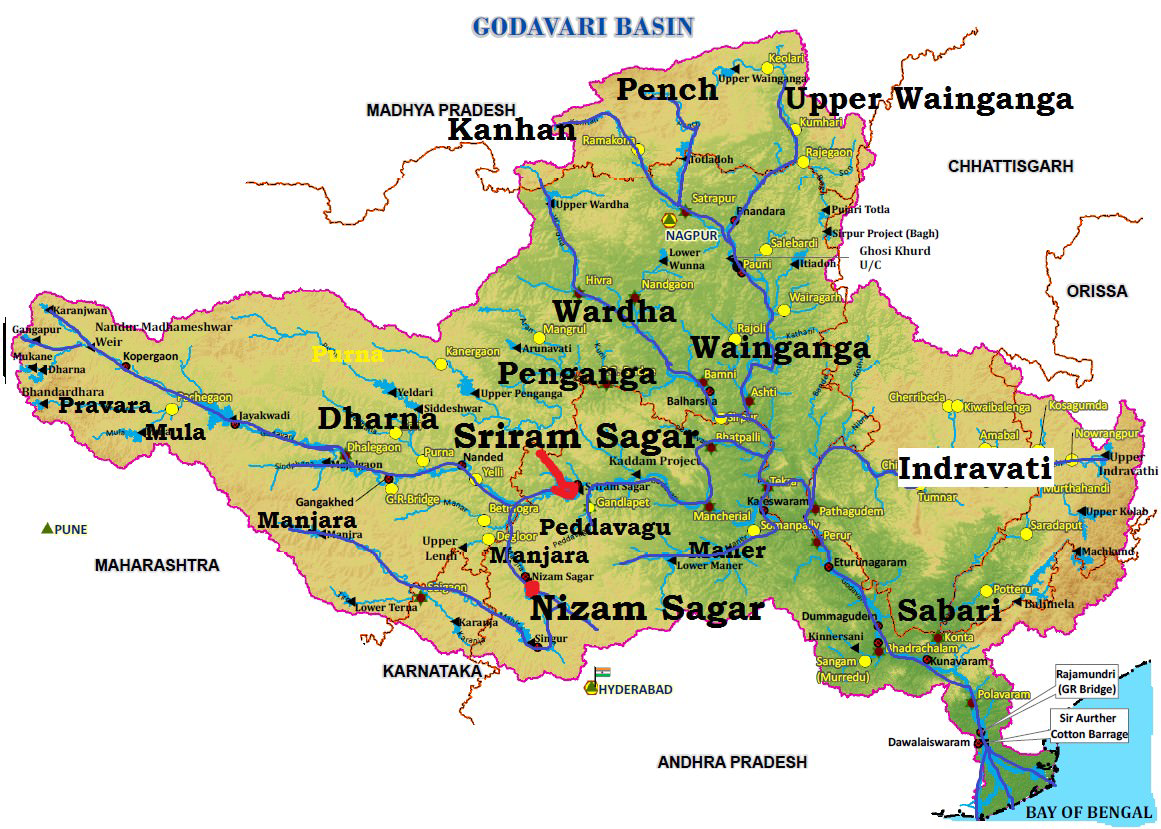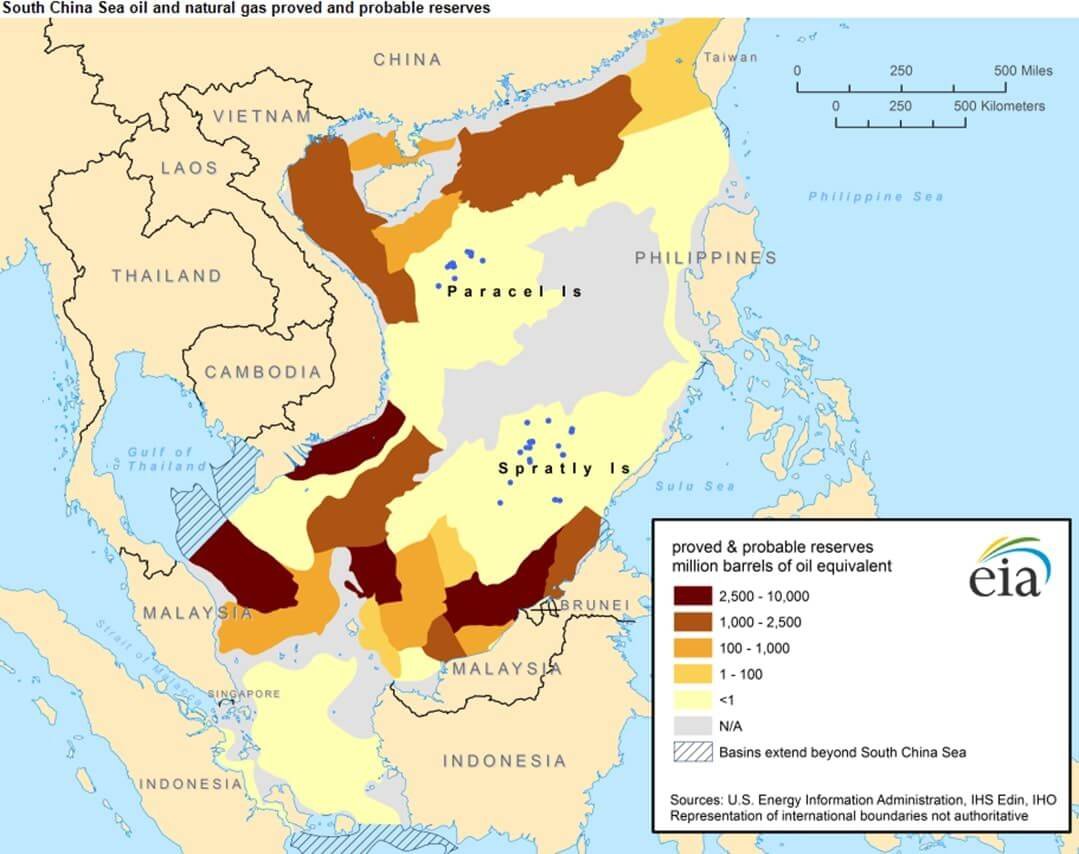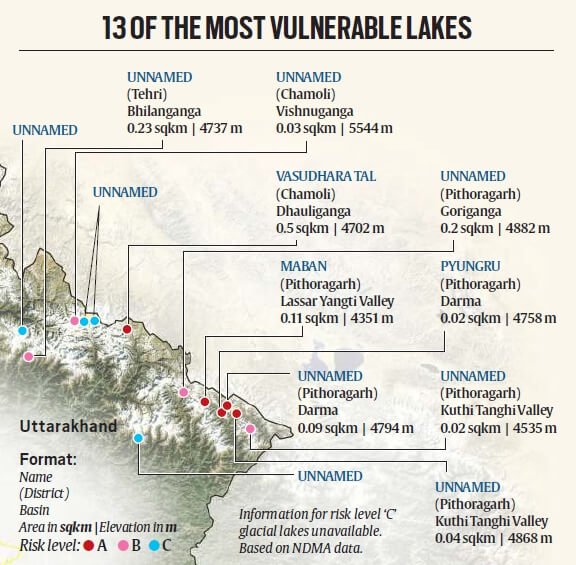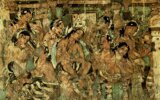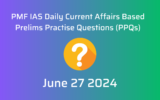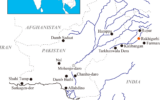
Current Affairs for UPSC Civil Services Exam – June 22, 2024
Subscribers of "Current Affairs" course can Download Daily Current Affairs in PDF/DOC
Subscribe to Never Miss an Important Update! Assured Discounts on New Products!
Must Join PMF IAS Telegram Channel & PMF IAS History Telegram Channel
{GS1 – Geo – PG – Geomorphology} Mystery behind Pink Sand in Australia
- Context (TH): Australian researchers have discovered that pink garnet sand on South Australian beaches originates from ancient Antarctic mountains.
- The research has provided new insights into the timing of the subduction of the Australian tectonic plate beneath the Pacific plate and has revealed the existence of previously unknown ancient mountains in Antarctica.
Pink Sand in Australia Beaches: Composition
- The pink sand is composed of a mineral called garnet. Garnet is rare in beach sand, as it is destroyed by prolonged exposure to the waves and currents of the ocean.
- It requires high temperatures to form and is usually associated with formation of large mountain belts.
- In Australia, Garnet is known to have formed locally during the Delamerian orogeny, an event which created the Adelaide Fold Belt around 514–490 million years ago, and during the formation of the Gawler Craton in western South Australia between 3.3–1.4 billion years ago.
Possible Sources of Garnet in Australia
Kimberlite Pipes
- Garnets can reach the surface via carrot-shaped volcanic structures called kimberlite pipes (found in South Australia, e.g. at Eurelia).
- However, these deposits are far from the coast, are not very abundant, and are only around 170–190 million years old, thus unlikely to be the source of beach garnets.
Prolonged Erosion of Adelaide Fold Belt
- Garnet typically forms in greater volumes in places where the crust is thick, such as under mountains.
- As the mountains erode, the garnet may be revealed as a record of the former mountain belt.
- The erosion of the Adelaide Fold Belt, which stretched north from Adelaide for hundreds of kilometres, developed between 514 million and 490 million years ago, could be another possible source.
Gawler Craton
- It is a huge slab of ancient rock beneath South Australia with outcrops in the Adelaide Fold Belt.
- It contains plenty of garnet that formed in several episodes between 3.3 billion-1.4 billion years ago.
Result of the new findings
- The recent research found that most garnets formed around 590 million years ago.
- Thus, the beach sand garnets were far too young to have come from the Gawler Craton, but too old to have come from the eroding Adelaide Fold Belt.
- Garnet dating to the same period has been found previously in an outcrop in the Transantarctic Mountains in East Antarctica.
- Ice-flow indicators along South Australia Shorelines reveal that the garnet-rich glacial sands were brought to Australia by a north-west moving ice sheet during the Late Palaeozoic Ice Age, when Australia and Antarctica were connected in supercontinent Gondwana.

Credit: Sciencealert
- The garnet deposits were then locally stored in glacial sedimentary deposits along the southern Australian margin until erosion liberated them and waves and tides concentrated them on the South Australian beaches.
{GS2 – IR – Groupings} G7 and India **
- Context (IE): The 50th G7 Leaders’ Summit was recently concluded in Apulia (Italy) with India‘s participation as an Outreach Country.
- On January 1, 2024, Italy succeeded Japan (2023) in assuming the Presidency for the seventh time in its history. It will hand it over to Canada on December 31, 2024.
History and evolution of G7
- The G7 is an informal grouping of leading industrialised nations, including the United States, France, Germany, Japan, the United Kingdom, Italy, and Canada.
- Representatives of the European Union (EU) are always present at the G7 leaders summit.
- The first “World Economic Summit”, which later became the G7, was launched in 1975 by former French President Valéry Giscard d’Estaing and then German Chancellor Helmut Schmidt.
- Initial concerns were economic problems of the 1970s, including the first oil crisis and the collapse of the system of fixed exchange rates (Bretton Woods).
- Germany, France, Great Britain, Italy, Japan and the US agreed on international economic policy and initial measures to fight the global downturn.
- Canada became a member of the group at the 1976 summit in Puerto Rico, and with its inclusion, the G7 was born (Not a founding member).
- The first talks between the then-European Community and the G7 took place in London in 1977.
- Since the Ottawa Summit of 1981, the European Community (now the European Union) has participated in all working sessions.
- In 1998, at the Birmingham Summit, the Group of Eight was constituted as Russia became a member.
- Russia’s membership was suspended in 2014 following its annexation of Crimea.
G7 and G20
|
Mechanism of G7 summits
- G-7 nations meet at annual informal summits, rotatedly presided over by leaders of member countries.
- The host country typically gets to invite dignitaries from outside the G-7 to attend the Summit.
- The groundwork for the summit, including matters to be discussed and follow-up meetings, is done by the “sherpas” (representatives of members).
- It ends with the release of a non-binding communique summarising key political commitments.
- The G7 does not have a formal constitution or a fixed headquarters.
- Each year, starting from the 1st of January, one of the Member States takes over the leadership of the Group on a rotating basis. The EU does not hold the rotating presidency of the G7.
G7 Summit 2024
- The agenda included defending the “rules-based international system” amid Russia’s aggression towards Ukraine and addressing the Middle East conflict.
- It also included strengthening partnerships with developing nations, especially in Africa.
- Key priorities included migration, climate change, food security, and the implications of artificial intelligence (AI) for humanity.
Key Highlights of G7 Summit 2024
- Key discussions centred on global conflicts, notably the Russia-Ukraine war & Israel-Hamas conflict.
- US and Ukraine signed a 10-year security agreement to bolster Ukraine’s defence against Russia.
- Additionally, the G7 leaders agreed to a $50 billion loan package for Ukraine, utilising interest from Russia’s frozen central bank assets as collateral.
- The UK announced new sanctions targeting entities involved in supplying military goods to Russia, including those based in China, Israel, Kyrgyzstan, and Turkey.
Relevance of G7
Achievements of G7
- In 1997, the G7 countries agreed to provide $300 million to the effort to contain the effects of the reactor meltdown in Chernobyl.
- At the 2002 summit, members decided to launch a coordinated response to fight the threat of AIDS, Tuberculosis and Malaria, leading to the formation of the Global Fund.
- The Global Apollo Program was launched out of the 2015 G7 summit meeting.
|
Criticism and shortcomings
- Exclusive and Closed Group: G7 faces international backlashes due to a disproportionate effect on the world economy. E.g. the Plaza Accord of 1985 had major ramifications for global currency markets.
- Outdated and Ineffective: The exclusion of two of the world’s largest economies, India and China, question its effectiveness.
- An analysis from the think tank Bruegel (‘The G7 is dead, long live the G7’) said the share of GDP of G7 members declined from roughly 50% in the 1970s to around 30% in 2018.
Plaza Accord
|
- Concern over internal cooperation: Disagreement on issues like climate change faces criticism.
- Then US President Donald Trump was often at odds with other G7 leaders and, at the 2019 summit, skipped a meeting on climate issues.”
India’s participation in G7
- India’s economic growth and its geopolitical role as a “swing state” have made it significant.
- Next year, India’s aggregate GDP is expected to overtake Japan’s & a couple of years later, Germany’s.
- That would put the size of India’s economy ahead of all G7 countries except the US.
Significance of the G7 for India
- India has a stake in developing deeper collaboration with the institutions of the “collective West”.
- It provides a forum to India for strengthening relations with the world’s leading economies.
- It can also help India transform into a global mediator, a manager of the region, and a mobiliser against China’s looming threat.
- By diversifying supply chains and fostering greater technological cooperation, India can advance the idea of regional and global economic restructuring.
- India has long called for reforming global institutions to reflect modern-day geopolitical realities.
{GS2 – IR – Issues} EU’s Chat Control Law
- Context (TH): The European Union’s proposed Chat Control law, aimed at combating child sexual abuse online, has sparked intense debate among member states about privacy and potential misuse.
- The law includes provisions for mass scanning of private messages and breaking end-to-end encryption. Critics argue that scanning creates risky backdoors, compromising the security by exposing it to exploitation by malicious third parties.
- Also, the scanning technology could be misused by authoritarian regimes to target dissidents.
- The revised draft limits scanning to images, videos, and URLs, excluding text and audio messages.
- Another change requires user consent for scanning, but a refusal would block multimedia sharing, making the “choice” effectively illusory.
What is Encryption?
- Encryption is the process of converting readable information into an unreadable format using specific rules. These rules, or encryption algorithms, use keys to lock and unlock the information.
- E.g. with a key “kite,” the algorithm encrypts “ice cream” into “AdNgzrrtxcpeUzzAdN7dwA==”. If a different key, like “motorcycle,” is used, the encrypted text becomes entirely different.
- The key acts like a password. A computer can decrypt the scrambled text (ciphertext) only if it has the correct key and knows the encryption rules used.
End-to-End (E2E) Encryption
- E2E encryption refers to a method where data is encrypted from the point of origin to its final destination. This ensures that the information remains protected throughout its entire journey.
- Encryption-in-transit protects data while it’s being transmitted between your device and the server.
- E2E encryption protects data both during transmission and when it’s stored on servers, only decrypting it when the intended recipient receives the message.
|
{GS2 – Polity – IC – Elections} Verification of EVM and VVPAT Units
- Context (IE): 11 candidates from the 2024 elections have applied to verify the burnt memory of Electronic Voting Machines (EVMs) and Voter Verified Paper Audit Trail (VVPAT) units.
- The SC introduced the verification option for losing candidates (2nd and 3rd placed candidates) in the Association for Democratic Reforms vs. Election Commission of India, 2024 case.
|
Guidelines for the Verification Process
- Only second and third-place candidates in an election can apply for verification.
- A maximum of 5% of EVMs and VVPATs from each constituency can be checked.
- If both 2nd and 3rd placed candidates apply, each will be allowed to verify 2.5% of the EVMs and VVPATs.
- Application: Written request to District Election Officer (DEO) within 7 days of result declaration.
- A deposit of Rs 40,000 (plus 18% GST) per EVM set needs to be paid to the manufacturer.
- If tampering is found, the deposited amount will be refunded to the candidate(s).
- The verification process begins 45 days after the result declaration to allow time for filing election petitions. If election petitions are filed, the verification will be delayed until court orders are received.
- ECI will release technical Standard Operating Procedure (SOP) for the verification process.
- Engineers from the EVM manufacturers will be responsible for conducting the verification.
Administrative SOP
- The District Election Officer (DEO) will oversee the entire verification process.
- Verification will be carried out at the manufacturer’s facilities under strict security measures.
- No electronic devices will be allowed during the verification process.
- The verification results are expected to be available by mid-August 2024.
{GS2 – Polity – IC – Reservation} The 50% Reservation Ceiling **
- Context (IE): The Patna High Court recently overturned Bihar government notifications that increased reservation in government jobs and educational institutions from 50% to 65%.
- Critics argue that the 50% limit is arbitrary and restricts the ability to address social inequalities.
- Proponents believe exceeding 50% could undermine the principle of equality, as reservations are exceptions to the general rule of merit-based selection.
Indra Sawhney Case (1992)
- The concept of a 50% limit on reservations originated from the landmark Supreme Court case of Indra Sawhney v Union of India in 1992.
- It held that social and educational backwardness would be the basis for qualifying for reservations.
- The court reiterated a previously established 50% limit on the combined total of all reservations for different communities. This limit could only be breached in “exceptional circumstances.”
- The 50% limit itself is currently under challenge before the Supreme Court.
EWS Quota Exception
- The 10% quota for the Economically Weaker Section (EWS) was upheld by the Supreme Court in 2022.
- The court reasoned that the EWS quota functioned outside the “backwardness” framework and, therefore, did not fall under the 50% limit.
- This decision raised questions about whether the court might revisit the Indra Sawhney ruling entirely.
|
{GS2 – Social Sector – Education} India’s Exam System in Crisis **
- Context (IE): The recent issues with the NEET exam and the cancellation of the National Eligibility Test (NET) by the National Testing Agency (NTA) eroded public trust in the examination system.
The Rationale Behind NEET
- It aimed to standardise the educational competence of students entering medical colleges.
- It sought to reduce the number of entrance examinations from an estimated 46 to a single test.
- It was designed to eliminate the practice of capitation fees in private medical colleges by reducing their discretion in the admissions process.
Implementation Challenges
- India’s non-uniform school system disadvantages non-CBSE students, as the NEET syllabus is based on the more rigorous CBSE curriculum.
- Poor governance and a lack of focus on critical thinking have led to a failing school system, placing the burden of NEET preparation on coaching institutes instead of schools.
- NEET has fueled a multi-billion dollar coaching industry, exacerbating inequality.
- The National Testing Agency (NTA) was created to centralise NEET, but it has raised concerns about federal overreach and disregard for state educational policies. E.g. Tamil Nadu.
Way Forward
The current NEET policy necessitates a comprehensive review
- An all-party committee could address the concerns of various stakeholders and create a system that accommodates regional disparities.
- Returning some control over medical school admissions to states and universities.
- Alternatives like a pre-medical year or regional exams could provide a more balanced approach.
A multi-pronged approach is needed to address the NEET crisis
- Improving the quality of schooling across India is essential to reduce dependence on coaching institutes.
- A balance needs to be struck between centralised oversight and state autonomy for exams.
- All stakeholders, including the central government, state governments, and educational institutions, must be held accountable for upholding fair practices.
- The judiciary can play a role in setting guidelines and ensuring the government takes action.
{GS3 – Envi – CC Impacts} Delos in danger of being sunk
- Context (TH): Delos, one of the most important sanctuaries of the ancient Greek and Roman world, is in danger of being sunk into the Aegean Sea due to climate change.
- Increasing temperatures combined with high levels of humidity can significantly affect the chemical composition of certain materials used in cultural heritage monuments.

Credits: Cromwell
- Delos is a rocky island in the centre of the Aegean Sea. It is part of the Cyclades archipelago. It was first settled in the third millennium BC.
- Apollo-Sun, god of daylight, and his twin sister Artemis-Moon, goddess of night light, were believed to have been born here.
- It is a UNESCO World Heritage Site.
Aegean Sea
- The Aegean Sea is part of the Mediterranean Sea. It is located between the Greek peninsula on the west and Anatolia (consisting of the Asian side of Turkey) to the east.
- It is connected in the north to the Sea of Marmara and the Black Sea by the Dardanelles and Bosphorus straits.
- The island of Crete is considered as its southern boundary.
{GS3 – IE – Industry} World Investment Report 2024
- Context (DTE): The World Investment Report 2024 was released recently by the UN Conference on Trade and Development (UNCTAD).
Key findings
- Global foreign direct investment (FDI) fell by 2% to $1.3 trillion in 2023 amid an economic slowdown and rising geopolitical tensions.
- FDI flows in Europe jumped from negative $106 billion in 2022 to positive $16 billion because of volatility in conduit economies. In contrast, in Africa, it declined by 3%, in Asia by 8% and in Latin America and the Caribbean by 1%.
- FDI in critical minerals nearly doubled. Infrastructure and digital economy sectors witnessed lower investment.
- International investment in sectors relevant for the Sustainable Development Goals in developing countries declined in 2023.
- The sustainable finance market continues to grow, but there are clear signs of a slowdown. Greenwashing poses the most significant challenge to the sustainable fund market.
{GS3 – S&T – Tech} Innovative Light Up-Conversion Device
- Context (TH): The Indian Institute of Science (IISc) have made a significant breakthrough in creating a device that can convert infrared light to visible light.
- It has the potential to revolutionise various fields, particularly defence and optical communications.
The Science Behind the Innovation
- The human eye is limited to perceiving light within the visible spectrum, with red light being at the lowest frequency of this range visible to humans.
- Infrared light, which has an even lower frequency, is invisible to the human eye.
- The newly developed device can up-convert the frequency of short infrared light, making it visible to the human eye. This process effectively transforms invisible light into visible light.
- The IISc team used a 2D material to create a unique “non-linear optical mirror stack” for up-conversion and wide-field imaging. This design includes layers of gallium selenide on top, silicon dioxide in the middle, and a gold reflective surface at the bottom.
- Traditional infrared imaging uses bulky, inefficient sensors with exotic semiconductors or micro-bolometer arrays, which detect heat or absorption signatures and face export restrictions.
- The IISc device provides a more efficient, domestically produced alternative.
Technical Process
- An input infrared signal and a pump beam are directed onto the mirror stack.
- The nonlinear optical properties of the stack material cause frequency mixing. The result is an output beam with increased (up-converted) frequency.
{Prelims – Envi – Species} Iberian Lynx – A Conservation Success Story
- Context (DTE): The Iberian Lynx (Lynx pardinus) has made a comeback from the brink of extinction.
- The International Union for Conservation of Nature (IUCN) upgraded its status from ‘Endangered‘ to ‘Vulnerable‘, reflecting significant conservation achievements in recent history.
- In 2001, the Iberian Lynx population was just 62 mature individuals. Over nearly 25 years, concerted efforts have boosted the population to over 2,000, including young and mature lynx.
- Since 2010, over 400 Iberian lynx have been successfully reintroduced to various locations of the Iberian Peninsula, covering parts of Portugal and Spain.
- The lynx’s occupied territory has grown from just 449 km2 in 2005 to over 3,320 km2 today.
{Prelims – In News} Sadfishing
- Context (IE): Social media trends have brought sadfishing into the spotlight.
- The term was coined in 2019 by journalist Rebecca Reid to call out celebrities for ‘performing sadness’ online in order to promote brands, products or a cause.
- It is like the “emotional equivalent of clickbait”, attracting sympathy and/or attention.
- Example: Poonam Pandey’s death hoax in February to raise awareness for cervical cancer. While it was a good cause, the need to resort to faking one’s death smacks of sadfishing.
- A 2023 study in BMC Psychology shows that anxiety, depression, and attention-seeking are some reasons for it.
- Conversely, the study also found that those with perceived social support tend to engage less.
- It is a natural behaviour. Sometimes, it is indicative of vulnerable persons in need of support.
{Prelims – In News} World’s oldest termite mound found in South Africa *
- Context (TH): Scientists have discovered the world’s oldest inhabited termite mounds along the Buffels River in Namaqualand, South Africa.
- Namaqualand is a global biodiversity hotspot renowned for its spring flowers, but it is a dry area. Surface water is in short supply, and the groundwater is saline.

Credits: Britannica
- The termite mounds, called ‘heuweltjies’ in Afrikaans (meaning ‘little hills’) are inhabited by the southern harvester termite, Microhodotermes viator.
- Radiocarbon dating of the organic carbon within these mounds has shown ages ranging from 13,000 to 19,000 years, while the carbonate dates back up to 34,000 years.
- This makes the Buffels River mounds the oldest active termite mounds with both organic & inorganic carbon. The previous oldest inhabited mounds from different species from Brazil are 4000 years old.
- During the formation of heuweltjies, the region experienced significantly more rainfall. The wetter climate allowed for minerals such as calcite and gypsum to dissolve and move down to the groundwater.
Carbon sequestration by termites
- The insects transport organic material, e.g. small sticks, deep into the soil, leading to continuous renewal of soil carbon reservoirs at depth, where they are preserved for longer periods.
- The tunnels also allow dissolved inorganic carbon (known as soil calcite or calcium carbonate) in the mound soil to move into the groundwater along with other soluble minerals thus sequestering CO2 through dissolution and leaching of soil carbonate-bicarbonate to groundwater.







![PMF IAS Environment for UPSC 2022-23 [paperback] PMF IAS [Nov 30, 2021]…](https://pmfias.b-cdn.net/wp-content/uploads/2024/04/pmfiasenvironmentforupsc2022-23paperbackpmfiasnov302021.jpg)
